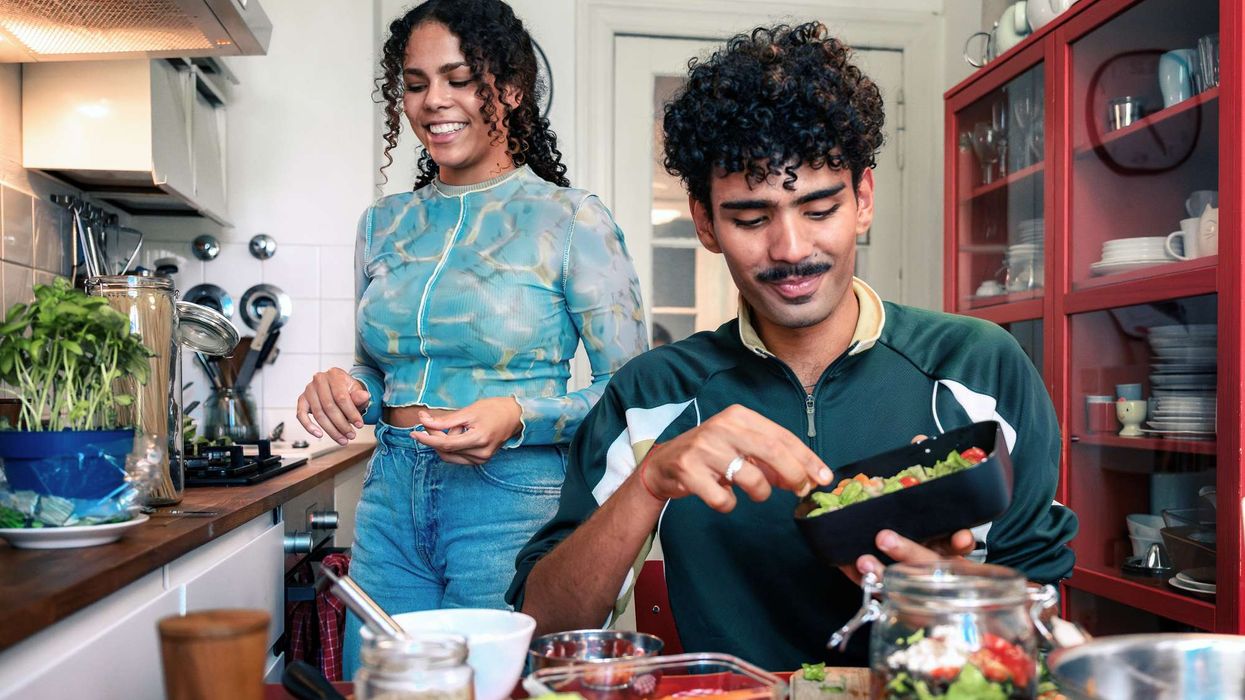By Lauren Codling
THE author of an Indian cookbook hopes her recipes will counter the notion that food from the subcontinent is “oily, heavy and creamy”.
Mira Manek’s first book Saffron Soul is a collection of Indian dishes with a contemporary twist.
Indian-inspired recipes for layered lentil and sweet potato jars; mango shrikhand (a sweet dish typical from the western state of Maharashtra); and cheesecake are Manek’s offering that keen foodies can experiment with and appreciate.
Acknowledging that Indian food can be seen as rich and unnecessarily unhealthy, she is eager to provide a healthier alternative.
“It doesn’t need to be so offputtingly heavy,” she told Eastern Eye. “There are in fact so many regional cuisines in India, each so distinctly unique and different, from south Indian coconut and ricebased dishes to Gujarati vegetarian cuisine with snacks galore and the richer north Indian curries and naans.
“The Indian ingredients and spices themselves are so incredibly beneficial. It’s the way Indian dishes are cooked, the addition of cream and excessive oil that have given Indian food its unhealthy reputation.”
This Diwali, the chef is hosting a supperclub at Dalloway Terrace, a stone’s throw from the hustle and bustle of London’s Oxford Street.
Manek’s supperclubs are known for their appetising and colourful feasts with a variety of her delicious recipes on offer.
Her special Diwali-themed event will be no different – working alongside the talented chefs at Dalloway, guests will be treated to a selection of dishes from Saffron Soul, including her signature Indian summers salad, a masala grilled aubergine and tandoori roasted cauliflower.
“Dalloway Terrace is a stunning place, so [guests are] in for a real treat,” she said.
Manek’s family are originally from Gujarat and she took inspiration from the local, traditional cuisine while inventing her own recipes.
The author described herself as “ecstatic” when she saw the book for the first time. It is, thus far, the proudest moment of her culinary career, she told Eastern Eye.
“It’s something I had wanted and worked towards, but finally having it as a book in my hands was unbelievable and thrilling at the same time,” she said.
The inspiration for new dishes and flavours also came from other chefs, food magazines, Instagram and cookbooks.
Manek stressed, however, that her biggest influences are her mother and grandmother. “Their cooking inspired my passion,” she said.
Her earliest memory of experimenting with food is showing her grandmother “a small sachet of oddly shaped brown seeds,” she purchased from Covent Garden.
When she saw it, her grandmother laughed as she told Manek she had been using the seeds – fenugreek, as it turned out, a common ingredient in south Asian cuisine – for years.
“I recall meandering the streets of Covent Garden in London on a summer’s day, and walking into Neal’s Yard where the lady recommended those magic seeds called fenugreek and my utter shock at the realisation that my grandmother, mother and aunts use them daily,” Manek said.
The author and blogger has a firm online following – her Instagram is an aesthetically pleasing pin board of her creations, currently boasting over 17,200 followers – who delight in her approach to food, nutrition and health.
Manek’s yoga brunch classes, available to book on her website, are her latest project and she is eager to continue to promote a happy and healthy lifestyle.
Saffron Soul is available on Amazon, Waitrose and at most good bookshops. To find out more about Mira and upcoming events, including her Diwali on Dalloway Terrence supperclub, see her website: https://miramanek.com/





 Mareyah Bhatti , a sustainability strategist and passionate home cookMareyah Bhatti
Mareyah Bhatti , a sustainability strategist and passionate home cookMareyah Bhatti






